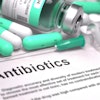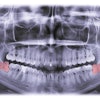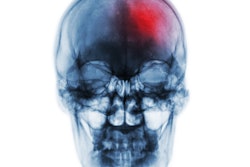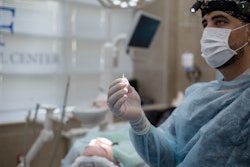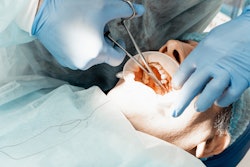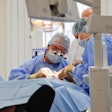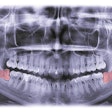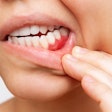
Invasive dental procedures, specifically tooth extractions and oral surgery, were significantly linked to endocarditis in high-risk individuals, but antibiotic prophylaxis reduced the incidence of this condition, according to a large study published on April 27 in Oral Diseases.
The findings support current guideline recommendations for antibiotic prophylaxis to prevent endocarditis following invasive dental procedures, the authors wrote.
“(There is) a significant temporal association between IDPs [invasive dental procedures] (particularly extractions and oral surgery procedures) and the subsequent development of IE [infective endocarditis] in those at high IE-risk,” wrote the authors, led by Dr. Martin Thornhill of the department oral medicine and oral and maxillofacial surgery at Atrium Health – Carolinas Medical Center in Charlotte, NC.
Concern about antibiotic resistance, as well as the risk of adverse drug reactions, led the American Heart Association (AHA) to recommend in 2007 that antibiotic prophylaxis be restricted to those who are at the highest risk of developing infective endocarditis after undergoing invasive dental procedures. In 2009, the European Society of Cardiology (ESC) implemented similar guidance. Despite these recommendations, data that support them is limited, according to the study.
To explore the link between invasive dental procedures and endocarditis and the effect of antibiotic prophylaxis on its incidence, the authors performed cohort and case-crossover studies on 1,678,190 Medicaid patients with linked medical, dental, and prescription data. The MarketScan multistate Medicaid database was used for states that provide Medicaid to adults.
In those who were considered at high risk, there was an elevated incidence of endocarditis within 30 days of undergoing invasive dental procedures, specifically after tooth extractions (odds ratio [OR], 14.17; 95% confidence interval [CI], 5.40-52.11; p < 0.0001) or oral surgery (OR 29.98; 95% CI, 9.62-119.34; p < 0.0001).
Furthermore, antibiotic prophylaxis significantly reduced the incidence of endocarditis following invasive dental procedures (OR 0.20; 95% CI, 0.06-0.53; p < 0.0001). Case-crossover analysis confirmed the association between invasive dental procedures and endocarditis in high-risk patients, particularly following extractions (OR 3.74; 95% CI, 2.65-5.27; p < 0.005) and oral surgery (OR 10.66; 95% CI, 5.18-21.92; p < 0.0001). The number of invasive procedures, extractions, or surgical procedures needing antibiotic prophylaxis to prevent one endocarditis case was 244, 143, and 71, respectively, the authors wrote.
The study was not without limitations. The authors would have preferred to restrict their analysis to the 30% to 40% of infective endocarditis cases caused by oral streptococci. However, it wasn’t possible, because microbiological data isn’t recorded in MarketScan databases, according to the study's authors.
Although this study focused on the relationship between invasive dental procedures and endocarditis, it is possible that more cases of oral streptococcal heart inflammation occurred due to daily activities, including toothbrushing and flossing, specifically in patients with poor oral hygiene. Therefore, the use of preventive antibiotics does not reduce the importance of maintaining good oral hygiene as a strategy to prevent infective endocarditis, the authors wrote.
“AP significantly reduced IE-incidence following these procedures, thus supporting current AHA and ESC guideline recommendations that all those at high IE-risk should receive AP before undergoing invasive dental procedures,” Thornhill and colleagues concluded.



